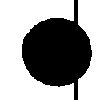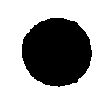LBitmap::HolePunchRemove
#include "ltwrappr.h"
virtual L_INT LBitmap::HolePunchRemove(pHolePunchRemove, uFlags = 0)
pHOLEPUNCH pHolePunchRemove; |
pointer to a structure |
L_UINT32 uFlags; |
flags |
Finds and removes hole punches.
Parameter |
Description |
pHolePunchRemove |
Pointer to the HOLEPUNCH structure that LEADTOOLS uses to remove hole punches. |
uFlags |
Reserved for future use. Must be 0. |
Returns
SUCCESS |
The function was successful. |
< 1 |
An error occurred. Refer to Return Codes. |
Comments
-
This function detects and removes hole punch marks that are common in scanned documents.
-
The behavior of this function can be modified by overriding LBitmap::HolePunchRemoveCallback.
-
This function does not support signed data images. It returns the error code ERROR_SIGNED_DATA_NOT_SUPPORTED if a signed data image is passed to this function.
-
This function works only on 1-bit black and white images.
-
This function does not support 32-bit grayscale images. It returns the error code ERROR_GRAY32_UNSUPPORTED if a 32-bit grayscale image is passed to this function.
-
Hole punch configurations may consist of 2 or more holes.
-
If a region is selected, only the selected region will be changed by this function. If no region is selected, the whole image will be processed.
-
Before calling this function, ensure that the hole punch is free of any other stray marks. If you do not, LBitmap::HolePunchRemove will not recognize the hole.
|
For example, this image must have the vertical line removed. Use LBitmap::LineRemove to remove any horizontal or vertical lines from the image. Use other Document Cleanup functions to remove other imaging artifacts such as dots, blobs, borders, inverted text, bumps and nicks. This will have the added benefit of making your image smaller when compressed. |
|
Once cleaned, L_HolePunchRemoveBitmap will be able to identify and remove the hole punch mark.
|
Required DLLs and Libraries
LTIMGCOR For a listing of the exact DLLs and Libraries needed, based on the toolkit version, refer to Files To Be Included With Your Application. |
Platforms
Win32, x64.
Example
//This example updates a Windows region with removed hole punches //For the example, a Windows region is updated and then converted to a LEAD region //but in practice it would easier and faster to just return a LEAD region //The HOLEPUNCH_USE_DPI flag instructs the API to determine the size of the hole punches // based on the image DPI //The image is modified //The derived class LMyBitmap is used to override the HolePunchRemoveCallBack function //The callback member function is used to display information about each hole punch removed //The callback member function does NOT receive a Windows regionclass LHolePunchRemoveBitmap : public LBitmap{public:LHolePunchRemoveBitmap();~LHolePunchRemoveBitmap();virtual L_INT HolePunchRemoveCallBack(HRGN hRgn,PRECT pBoundingRect,L_INT32 iHoleIndex,L_INT32 iHoleTotalCount,L_INT32 iWhiteCount,L_INT32 iBlackCount);};LHolePunchRemoveBitmap::LHolePunchRemoveBitmap(){}LHolePunchRemoveBitmap::~LHolePunchRemoveBitmap(){}L_INT LBitmap__HolePunchRemoveExample(LBitmapWindow *pBitmapWindow){L_INT32 nRet;HOLEPUNCH hr;hr.uStructSize = sizeof(HOLEPUNCH);hr.iLocation = HOLEPUNCH_LEFT;hr.iMinHoleCount = 2;hr.iMaxHoleCount = 4;hr.pBitmapRegion = NULL;hr.uFlags = HOLEPUNCH_SINGLE_REGION | HOLEPUNCH_USE_DPI | HOLEPUNCH_USE_COUNT | HOLEPUNCH_USE_LOCATION;nRet = pBitmapWindow->HolePunchRemove(&hr);if (nRet == SUCCESS){//Delete the existing regionLBitmapRgn Region(pBitmapWindow);if(Region.BitmapHasRgn()){Region.Free();}Region.SetRgnCombineMode(L_RGN_SET) ;Region.SetRgnHandle(hr.hRgn);DeleteObject(hr.hRgn);}return SUCCESS;}L_INT LHolePunchRemoveBitmap::HolePunchRemoveCallBack(HRGN hRgn,PRECT pBoundingRect,L_INT32 iHoleIndex,L_INT32 iHoleTotalCount,L_INT32 iWhiteCount,L_INT32 iBlackCount){UNREFERENCED_PARAMETER(hRgn);CString strMsg;strMsg.Format (TEXT("Bounds[%d,%d][%d,%d]\tHole[%d] of [%d]\tWhiteCount[%d]\tBlackCount[%d]\n"),pBoundingRect->left,pBoundingRect->top,pBoundingRect->right,pBoundingRect->bottom,iHoleIndex,iHoleTotalCount,iWhiteCount,iBlackCount);OutputDebugString(strMsg);return SUCCESS_REMOVE;}
© 1991-2017 Apryse Sofware Corp. All Rights Reserved.


